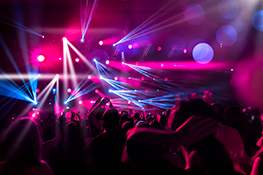The Ultimate Guide to Par Can Lighting: Types, Applications, and Best Practices
Understanding the Power of PAR Cans
PAR cans, short for Parabolic Aluminized Reflector, are workhorses of the stage lighting world. Their robust construction, versatility, and relatively low cost make them a staple in theaters, concert venues, and even smaller-scale productions. This guide delves into the intricacies of PAR can lighting, exploring their various types, suitable applications, and best practices for optimal performance.
Types of PAR Cans: A Detailed Overview
The core of a PAR can lies in its parabolic reflector, which focuses the light beam. However, variations in bulb type, lensing, and size lead to significant differences in output.
PAR 36, PAR 38, PAR 56, and PAR 64:
These numbers denote the diameter of the lamp in eighths of an inch. Larger numbers generally equate to a more powerful light output and a wider beam angle. PAR 64s, for example, are often used for long-throw applications, while PAR 36s are preferred for more focused effects. The choice depends largely on the desired beam spread and throw distance.
Different Bulb Types:
PAR cans can utilize various bulb types, including halogen, tungsten, and LED. Halogen lamps offer a bright, warm light, but consume significant energy and generate heat. LED PAR cans offer superior energy efficiency, longer lifespan, and a wider array of color temperatures and special effects – often including RGB capabilities and dynamic color mixing.
Lens Options:
Different lenses can be affixed to the front of a PAR can to further modify the beam angle. Narrow-angle lenses produce a concentrated beam, ideal for spotlighting, while wide-angle lenses create a broader, more diffused wash. Choosing the right lens is crucial for achieving the intended lighting effect.
Applications of PAR Can Lighting: From Stage to Studio
The versatility of PAR cans makes them applicable across a wide range of lighting scenarios:
Stage Lighting:
PAR cans are frequently employed for front lighting, backlighting, side lighting, and special effects. Their ability to produce both focused beams and broad washes allows for nuanced lighting design, creating depth and atmosphere on stage.
Studio Lighting:
In film and photography studios, PAR cans offer a cost-effective and reliable solution for key lighting, fill lighting, and background illumination. Their powerful output makes them suitable for a variety of shooting conditions.
Architectural Lighting:
With appropriate lensing and color filtering, PAR cans can be used to highlight architectural features, creating dramatic visual impacts in both indoor and outdoor spaces.
Event Lighting:
From concerts and corporate events to weddings and parties, PAR cans provide vibrant and adaptable illumination. They can be easily rigged and positioned to create the desired mood and atmosphere.
Best Practices for Utilizing PAR Can Lighting
Maximizing the potential of PAR cans requires careful planning and execution:
Proper Rigging and Safety:
Always ensure that PAR cans are securely rigged using appropriate clamps and safety cables. Follow all manufacturer instructions and prioritize safety precautions to prevent accidents.
Effective Color Filtering:
Gel filters are commonly used to modify the color of the light emitted by PAR cans. Experiment with different gel combinations to create the perfect ambience for your event or production.
Precise Beam Control:
Mastering beam control involves careful consideration of the lens type, distance from the subject, and aiming. Practice is key to achieving the desired lighting effect.
Energy Efficiency and Heat Management:
When using halogen PAR cans, be mindful of heat generation. Ensure adequate ventilation to prevent overheating and potential fire hazards. LED alternatives offer a significant advantage in this regard.
Conclusion: Illuminating the Way Forward with PAR Cans
PAR cans remain a crucial element in the lighting designer’s toolkit. Their adaptability, cost-effectiveness, and robust performance make them an excellent choice for a diverse range of applications. By understanding the different types, applications, and best practices detailed in this guide, you can unlock the full potential of PAR can lighting and create truly spectacular lighting designs.


 Auditorium Construction Services
Auditorium Construction Services 